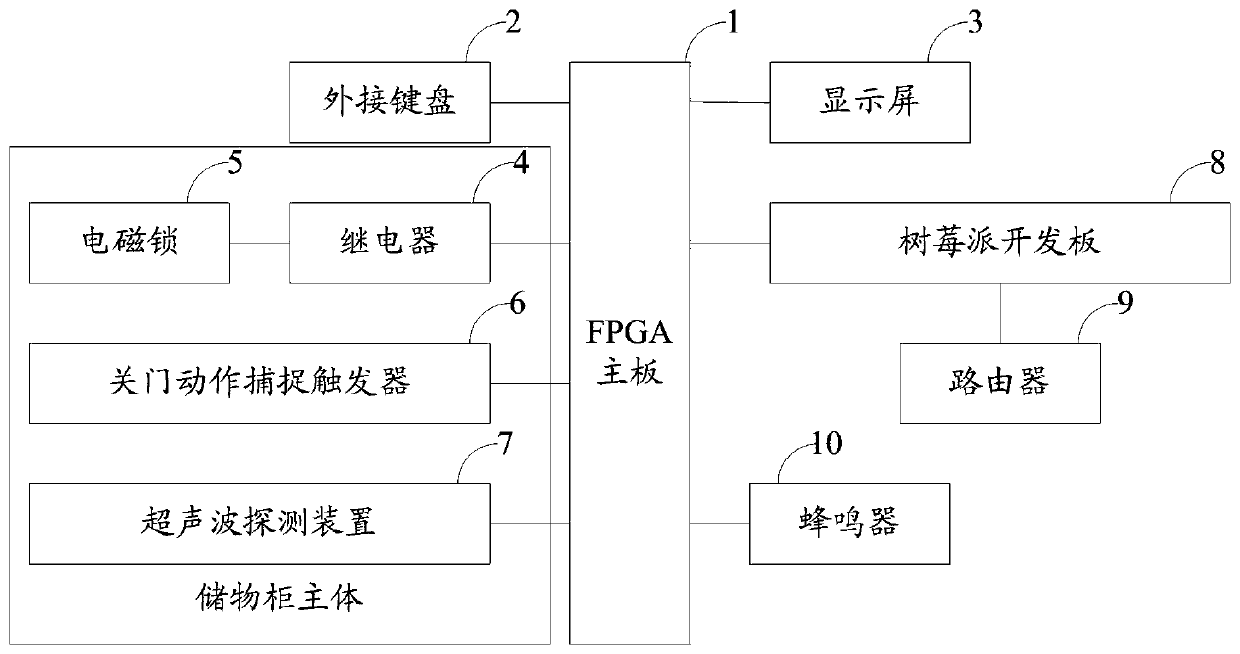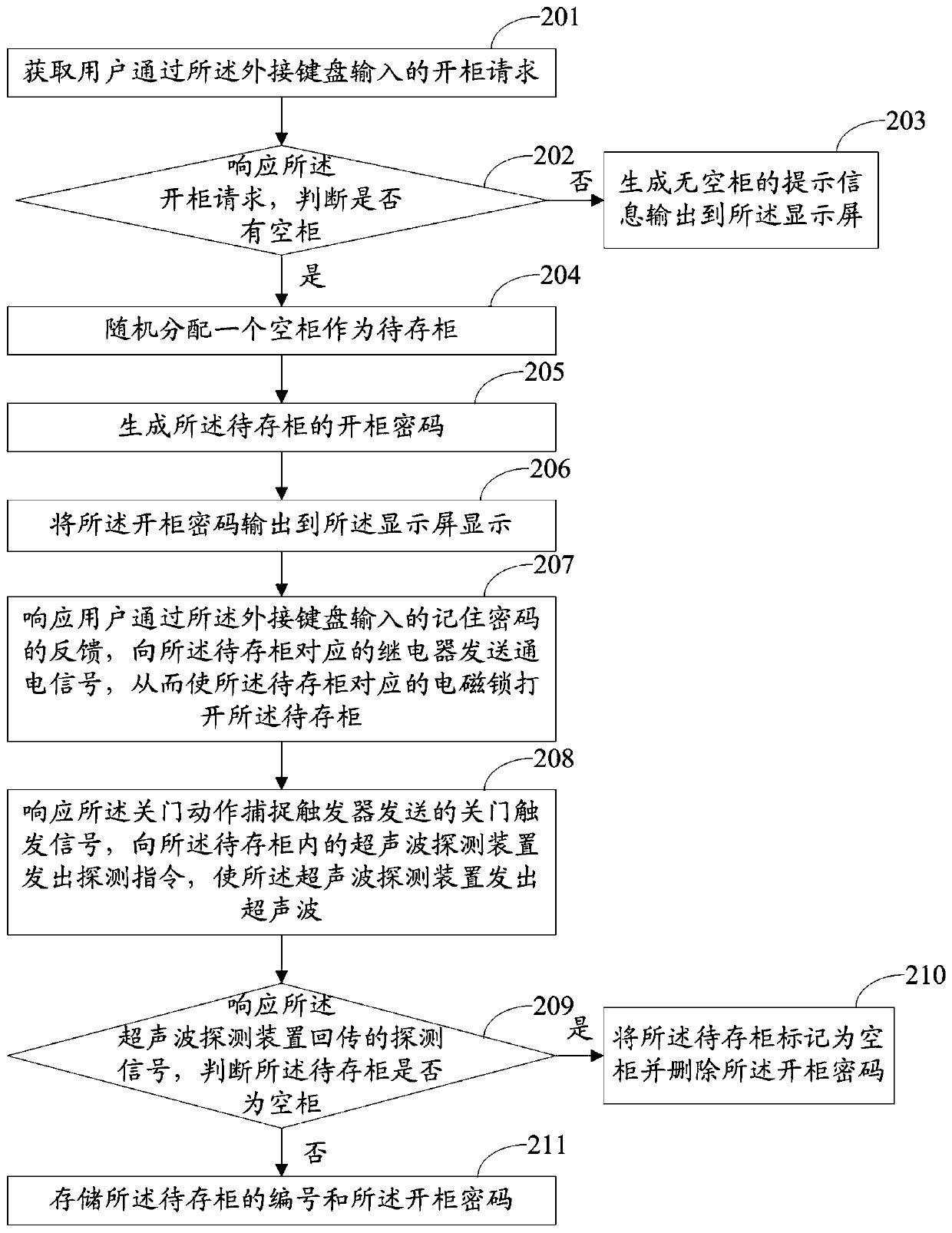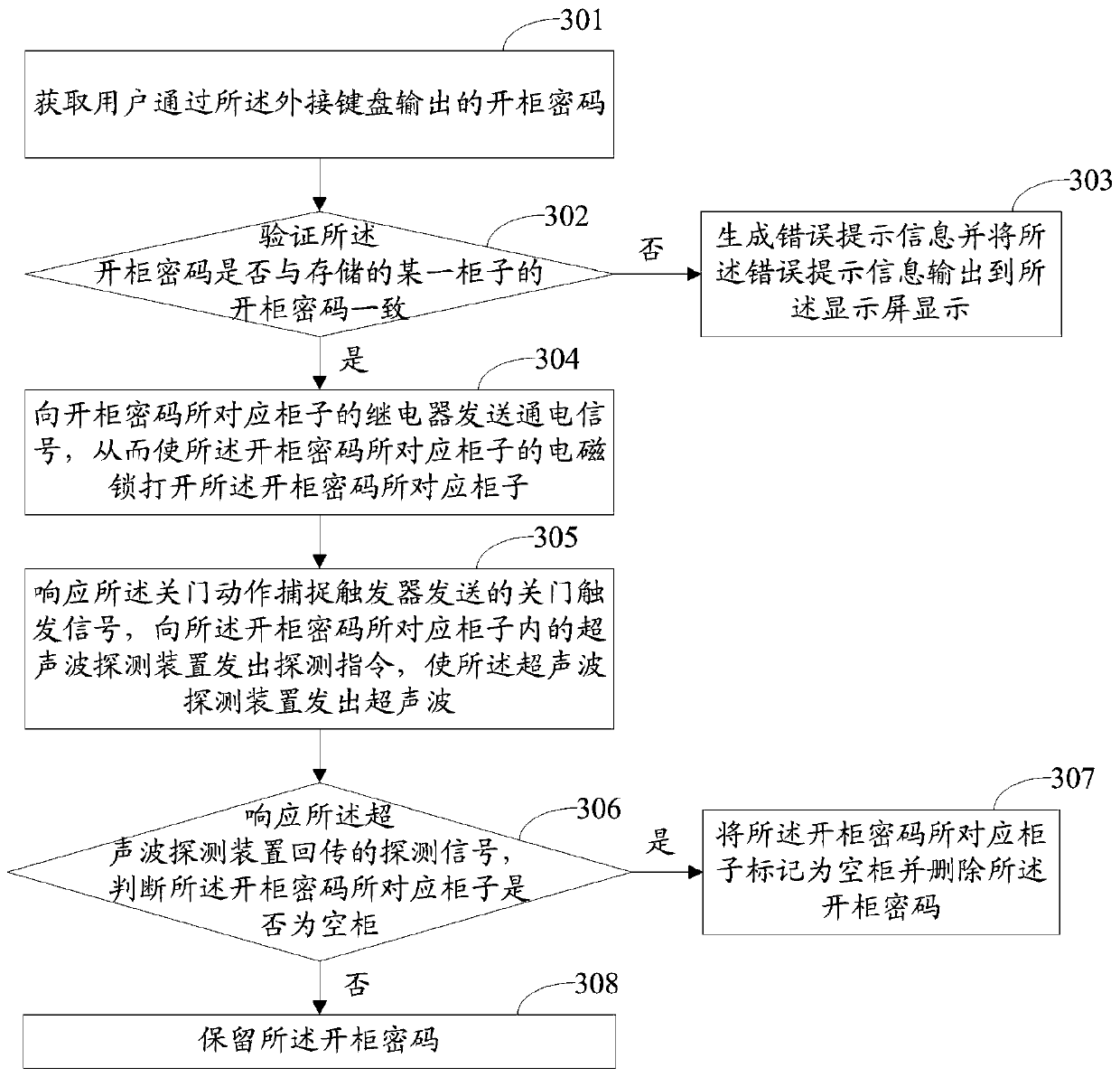Storage cabinet based on FPGA control and object storage and fetching method
A technology of lockers and cabinets, which is applied in the field of fetching, FPGA-based lockers and storage, and can solve the problem of increasing the burden on users to carry unlocked items
- Summary
- Abstract
- Description
- Claims
- Application Information
AI Technical Summary
Problems solved by technology
Method used
Image
Examples
Embodiment 1
[0058] figure 1 It is a device connection diagram of the locker based on FPGA control in Embodiment 1 of the present invention.
[0059] see figure 1 , the locker based on FPGA control includes: an FPGA main board 1, an external keyboard 2, a display screen 3 and a plurality of locker main bodies; the locker main body includes a relay 4, an electromagnetic lock 5, and a door closing motion capture trigger 6 and ultrasonic detection device 7.
[0060] The output end of each described door-closing action capture trigger 6 is all connected with the input end of described FPGA mainboard 1; The output end of described FPGA mainboard 1 is connected with each described relay 4, and each described relay 4 is connected in corresponding In the circuit where the electromagnetic lock 5 is located; the FPGA main board 1 is connected with the ultrasonic detection device 7 bidirectional communication; the output end of the external keyboard 2 is connected with the input end of the FPGA mai...
Embodiment 2
[0096] Embodiment 2 discloses a storage method based on an FPGA-controlled locker, which is applied to the FPGA-controlled locker in Embodiment 1.
[0097] figure 2 It is a method flow chart of the storage method of the locker based on FPGA control according to Embodiment 2 of the present invention.
[0098] see figure 2 , the deposit method includes:
[0099] Step 201: Obtain the cabinet opening request input by the user through the external keyboard;
[0100] Step 202: responding to the cabinet opening request, judging whether there is an empty cabinet, and obtaining a first judging result;
[0101] Step 203: If the first judgment result indicates no, generate a prompt message that there are no empty cabinets and output it to the display screen;
[0102] Step 204: If the first judgment result indicates yes, randomly assign an empty cabinet as the cabinet to be stored;
[0103] Step 205: Generate the password for opening the cabinet to be stored;
[0104] Step 206: Ou...
Embodiment 3
[0120] Embodiment 3 discloses an FPGA-controlled locker retrieval method, which is applied to the FPGA-controlled locker in Embodiment 1. The fetching method of this embodiment 3 is corresponding to the storage method of embodiment 2.
[0121] image 3 It is a method flow chart of the FPGA-controlled locker retrieval method according to Embodiment 2 of the present invention.
[0122] see image 3 , the extraction method includes:
[0123] Step 301: Obtain the cabinet opening password output by the user through the external keyboard;
[0124] Step 302: verify whether the password for opening the cabinet is consistent with the stored password for opening a certain cabinet, and obtain a third judgment result;
[0125] Step 303: If the third judgment result indicates no, generate error prompt information and output the error prompt information to the display screen for display;
[0126] Step 304: If the third judgment result indicates yes, then send an energization signal to ...
PUM
 Login to View More
Login to View More Abstract
Description
Claims
Application Information
 Login to View More
Login to View More - R&D
- Intellectual Property
- Life Sciences
- Materials
- Tech Scout
- Unparalleled Data Quality
- Higher Quality Content
- 60% Fewer Hallucinations
Browse by: Latest US Patents, China's latest patents, Technical Efficacy Thesaurus, Application Domain, Technology Topic, Popular Technical Reports.
© 2025 PatSnap. All rights reserved.Legal|Privacy policy|Modern Slavery Act Transparency Statement|Sitemap|About US| Contact US: help@patsnap.com



